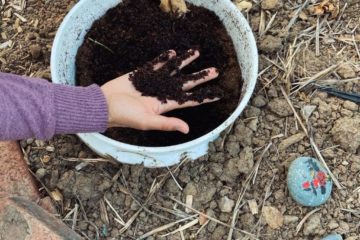Written by Thia Dotson, Communications Intern
What is National Native American Heritage Month?
As we enter a new month in December, we must continue celebrating and appreciating the different cultures, traditions, languages, foods, and stories of Native American, Native Hawaiian, and Alaska Native Communities, as we did in November, which is known as National Native American Heritage Month. November is a key time to reflect and recognize all of the many contributions that Native Americans have made that have allowed America to be what it is today, as is every month. The governor of New York proclaimed the second Saturday in May 1916 to be the first American Indian Day in state history. Fast forward to 1990, Bush created a joint resolution making November “National American Indian Heritage Month”, and since 1994, different variants of the name such as “National American Indian and Alaska Native Heritage Month” and “Native American Heritage Month” have emerged [2].
Why is National Native American Heritage Month Important?
Over the years, Native Americans, Alaska Natives, and Native Hawaiians have and continue to endure many struggles, challenges, and injustices related to their rights, land, and overall lives. As a result, the physical, mental, spiritual, and emotional health of many Natives have been impacted negatively which is why we must be aware of the treatments that Indigenous peoples have faced over history.
Today, Native American Heritage Month allows people to not only acknowledge the injustices, challenges, and struggles of Native American peoples, but also appreciate, and educate themselves on Indigenous people’s accomplishments, cultures, achievements, traditions, contributions, as well as land acknowledgments. This helps to preserve Indigenous cultures and land, spread awareness, and promote unity, respect, and understanding.
Each Green Corners Recognition of Native American Indian Heritage Month:
According to the U.S. Department of the Interior: Indian Affairs, there are 574 federally recognized Native tribes in the US since 2021, however, there are still many that haven’t received the recognition they deserve [8].
One local Bay Area Native American Tribe that is very well known and well respected and has continued to leave many contributions to the community and land in the San Francisco Peninsula is the Ramaytush Ohlone. The Ramaytush Ohlone consisted of 10 tribes and about 1,500 people who lived and continue to be stewards of the land in the areas we know today as the San Mateo Counties, San Francisco, and part of Santa Clara County [6].
The Aramai tribelet tended to the land known as Pacifica in San Mateo County and harvested tule reeds from the Mori Point wetlands to make their unique living structures, baskets, and fishing boats. While the Aramai hunted for fish, abalone, foxes, elk, and deer, they also depended on the abundant Native blackberries, strawberries, acorns, buckwheat, and yarrow as well as other unique native plants [7]. The Ramaytush Ohlone is and will always be intelligent, sacred, and knowledgeable stewards of the land, and we must acknowledge and appreciate the Native peoples who have sacrificed so much and worked so hard to protect the land as we know it.
At Each Green Corner, we strive to build a diverse community and sustainable future where everyone feels heard, acknowledged, and supported. It is always our priority that we are planting, harvesting, and tending to the land we work with in the most sustainable, responsible, and respectful way possible. Therefore, it is vital that we continue to listen to the wisdom of the land and Native peoples who came before us, and that we continue to be educated on the history of the land, local Indigenous tribes, and native plants/crops that surround us.
Native American Connection to Native Plants:
Native Americans have always had a very strong relationship with their land and have used the natural resources and Native Plants for their benefit. The use of Native Plants by Native Americans involves connection to food, ceremonies, shelter, clothing, and medicine [1]. As a matter of fact, according to the Smithsonian Institution, “…more than half of the crops grown worldwide today were first cultivated successfully and scientifically in the Americas by Indigenous People” yet “…many Native food systems were disrupted due to European settlement and the displacement of Native peoples from their lands” [3].
November also happens to be the Native Americans’ traditional harvest season [5], therefore it is only right that we recognize important Indigenous crops that are Native to the Americas. Here are just a few Native American staples in the Americas: *Squash, Corn, *Green Beans, *Berries, Nuts, Seeds, Peppers, *Tomatoes, and Sweet Potatoes [4].
*Crops we plant at Each Green Corner
Here are some ways you can help honor, support, and celebrate NNAHM and Native American Indigenous Cultures throughout the year:
-educate yourself and others on Native American leaders, culture, history, land, traditions, plants, etc.
-plant native crops
-attend events
-honor elders
-support Native-owned businesses
-enjoy Indigenous art and food
-read books/poems written by Indigenous poets and authors
-donate
Additional Resources:
Indigenous peoples of San Mateo County2023. San Mateo County Office of Education. (2023). https://www.smcoe.org/for-communities/indigenous-people-of-san-mateo-county.html
Knowles, S. (2022, October 6). Support These Indigenous-Led Efforts to Preserve Traditional Foodways on Ohlone Land. Foodwise. https://foodwise.org/articles/support-these-indigenous-led-efforts-to-preserve-traditional-foodways-on-ohlone-land/
Native American-Owned Businesses. U.S. Small Business Administration. (2023). https://www.sba.gov/business-guide/grow-your-business/native-american-owned-businesses
Conclusion:
It is crucial to remember to honor and respect the heritage and culture of the extraordinary Native American communities and their many contributions, not just in November, but every month, in every way we can. We hope that you learned a bit more about the significance of National Native American Heritage Month and how important it is to us here at EGC!
Sources:
[1] Casey, P.A. and R.L. Wynia. 2010. Culturally Significant Plants. USDA-Natural Resources Conservation Service, Kansas Plant Materials Center. Manhattan, KS
[2] Congress, T. L. of. (n.d.). National Native American Heritage Month. National Native American Heritage Month. https://www.nativeamericanheritagemonth.gov/about.html
[3] Native Knowledge 360°-Native Life and Food: Food Is More Than Just What We Eat. National Museum of the American Indian | Smithsonian. (2023). https://americanindian.si.edu/nk360/informational/native-life-food
[4] Park, S., Hongu, N., & Daily III, J. W. (2016). Native American foods: History, culture, and influence on modern diets. Journal of Ethnic Foods, 3(3), 171–177. https://doi.org/https://www.sciencedirect.com/science/article/pii/S2352618116300750
[5] Stokes, J. T. (2021, November 30). Celebrating National Native American Heritage Month. SAMHSA. https://www.samhsa.gov/blog/celebrating-national-native-american-heritage-month
[6] The Association of Ramaytush Ohlone. (2023). https://www.ramaytush.org/
[7] Urich, W. (2018, December 4). The Ramaytush Ohlone – Lessons On Stewardship From The Ancestral Stewards Of The Peninsula. Golden Gate National Parks Conservancy. https://www.parksconservancy.org/article/ramaytush-ohlone-lessons-stewardship-ancestral-stewards-peninsula
[8] U.S. Department of the Interior: Indian Affairs. (n.d.). Frequently Asked Questions. Frequently Asked Questions | Indian Affairs. https://www.bia.gov/frequently-asked-questions



0 Comments